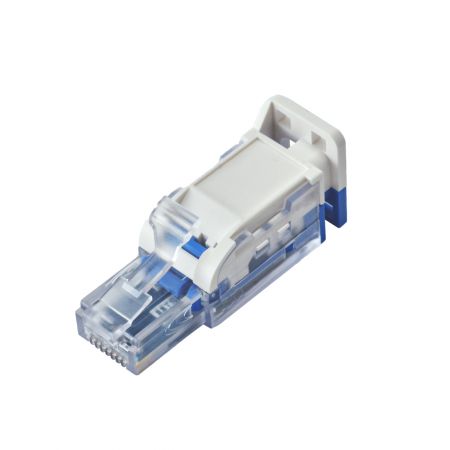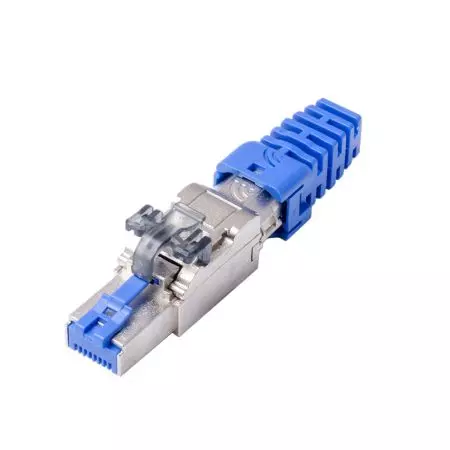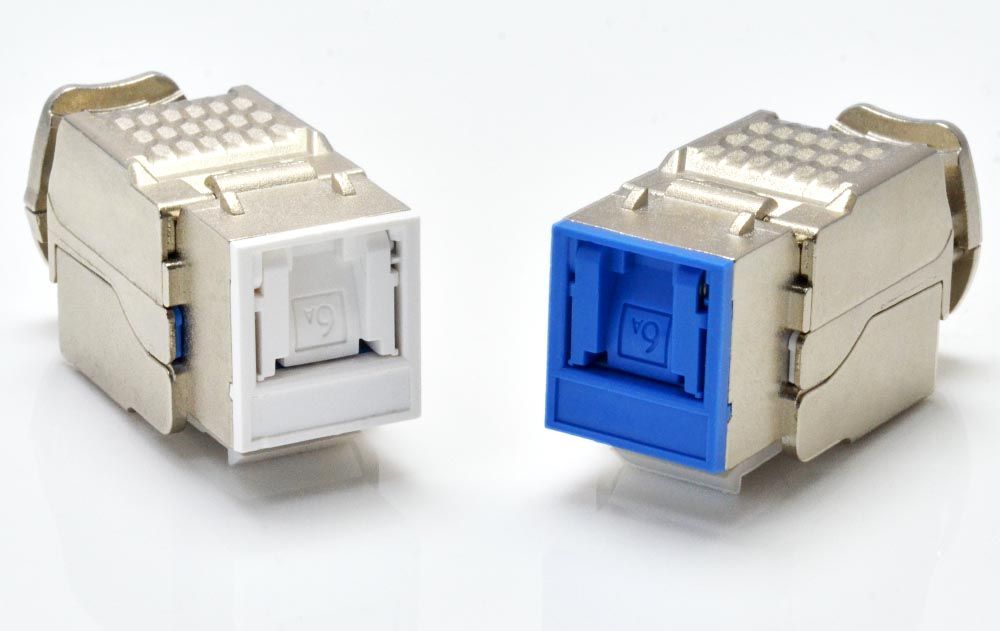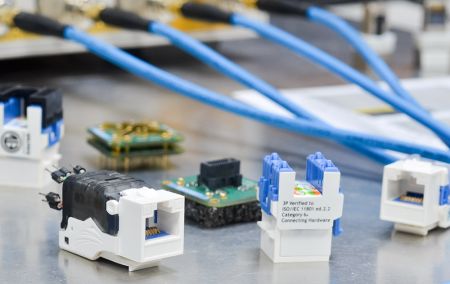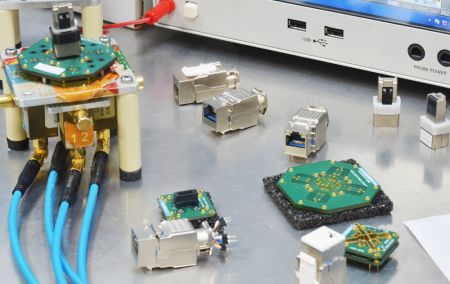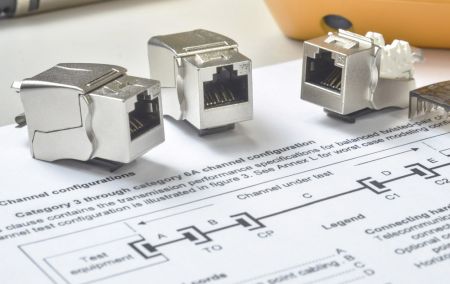Keystone Jacks
Toolless / Punchdown
Keystone Jacks have a lengthy history intertwined with the prosperous expansion of broadband networks. They are prevalent in structured cabling across various settings, from telecommunication rooms to consolidation points and from zone distribution to work areas adjacent to personal computers. Despite the increasing prominence of WiFi, particularly in residential constructions, it's essential to acknowledge the continued need for reliable keystone jacks discreetly positioned behind walls. These jacks serve as crucial connectors, linking your wireless network with patch cords, enabling seamless connectivity.
In commercial buildings, where flawless networking is paramount, dependable cabling remains the linchpin, with keystone jacks emerging as pivotal components ensuring optimal network quality for every connection. The structured cabling's lifespan is 20 years, underscoring the importance of making informed decisions when selecting proper keystone jacks. Unlike replaceable components, these jacks form the permanent link, emphasizing the need for careful consideration. To aid in this decision-making process, here's a concise guide to help distinguish between different options:
APPLICATION
UTP or STP? That is always the question.
- Unshielded Keystone Jacks continue to dominate the North American market, capturing at least 80 percent of market shares. Their ease of installation, devoid of complex grounding procedures, is a key factor behind this trend.
- Shielded Keystone Jacks offer robust protection against external interference. Countries such as France, Germany, and other mid-European nations adhere to shielded cabling standards mandated by stringent EMC regulations.
TRANSMISSION
Presently, many people have realized the distinction between Component-Rated and Channel-Compliant specifications.
- Component-Rated explicitly signifies that the keystone jack adheres to the strict limits outlined by the standard for connecting hardware. It's a straightforward definition, leaving no room for ambiguity.
- Channel-Compliant necessitates a thorough examination of many possible mixed-and-match configurations. This option can be viable if you have the capability to test multiple connection channels and validate alien crosstalk performance, a necessity as per Cat 6A requirements.
CATEGORY
In the market, we have categories ranging from Cat 3 to Cat 8. Cat 3 has nearly become obsolete, being largely replaced by Cat 5e. Cat 8 is exclusively for data centers, and in the context of data centers, fiber optics are often favored over copper cabling. Therefore, the focus narrows down to Cat 5e, Cat 6, and Cat 6A.
- ISO Cat 6a stands out as the most stringent requirement for keystone jacks. Despite its name being similar to TIA Cat 6A, the "ISO" designation signifies that it adheres to ISO/IEC specified limits, covering the TIA limit but not vice versa. Always consider ISO Cat 6a as your premium choice.
- TIA Cat 6A is highly recommended for its ability to support a full 100-meter channel run with a 10Gb/s data rate, compatible with IEEE 10GBASE-T applications.
- Cat 6 currently dominates the market share due to its ability to run Gigabit Ethernet up to a bandwidth of 250MHz. This bandwidth is more than sufficient for most residential environments and typical office setups.
- Cat 5e is approaching its curtain call. Nevertheless, it still manages to meet the demands of modern media streams and facilitates Gigabit Ethernet operations.
INSTALLATION
Both toolless (requiring no impact tool) and punchdown methods have their respective enthusiasts.
- Toolless termination facilitates rapid completion, handling all 8 wires simultaneously. HCI offers an EZ-Parallel Plier that makes completing the task effortless.
- Punchdown, on the other hand, provides a tangible sense of assurance as each wire is firmly pressed into place. Similarly, HCI provides an EZ-Term. Tool that punches down 8 wires and trims the excess.

